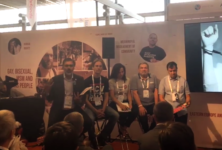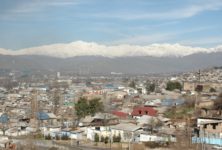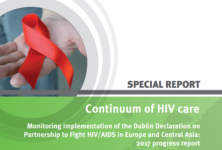A very low viral load (20-49 copies/ml) during HIV therapy does not increase the risk of the subsequent virological failure of treatment (viral load above 200 copies/ml), according to Spanish research published in HIV Medicine.
The findings of the study will provide reassurance that patients with very low level viraemia (VLLV) do not need to change their antiretroviral therapy.
An undetectable viral load is the aim of HIV treatment. Assays in use soon after effective treatment was introduced had a lower limit of detection of 400 copies/ml. Assays sensitive to 50 copies/ml rapidly became available and persistent suppression below 50 copies/ml became widely accepted as the threshold for the virological success of antiretroviral therapy. However, in 2008/09 assays with a lower limit of detection of just 20 copies/ml were introduced into routine clinical use. The appropriate management of patients with a viral load below 20-49 copies/ml is uncertain, though current practice is generally to leave treatment unchanged.
A team of Spanish researchers therefore designed a study focusing on 4289 antiretroviral-treated patients who achieved a viral load below 20 copies/ml after the introduction in May 2009 of assays sensitive to 20 copies/ml. They examined whether subsequent rebound in viral load to 50 copies/ml, 50-200 copies/ml or above 200 copies/ml was associated with virological failure – a persistent viral load above 200 copies/ml, usually the trigger to change treatment.
Adult patients who started HIV therapy after 1997 (when use of triple-drug treatment first became widespread) were eligible for inclusion in the study. Of these individuals, 13,671 (64%) achieved suppression below 50 copies/ml and 4289 had a viral load below 20 copies/ml after the introduction of the most sensitive assays in May 2009.
These patients were followed for a median of 639 days and contributed a total of 8069 person-years of follow-up. A viral load below 20 copies/ml was maintained by 2623 patients during 4194 person-years of follow-up and 1666 patients had one or more viral load above 20 copies/ml during 3930 person-years of follow-up. In approximately half (n = 824) of these viraemic patients viral load always remained below 50 copies/ml, whereas 563 had at least one viral load result between 50-200 copies/ml and 278 patients had one or more viral load measurement above 200 copies/ml.
After controlling for potential confounders and taking into account type of antiretroviral regimen – including short-term use of boosted protease inhibitor monotherapy with a switch back to traditional therapy in the event of a viral load blip – the investigators found that very low level viraemia (20-49 copies/ml) was not associated with subsequent virological failure when compared to persistent suppression below 20 copies/ml (HR = 0.67; 95% CI, 0.44-1.00).
“In those patients of our cohort who were able to ever achieve suppression of HIV viral replication sufficient to being VL to below the level of detection of [20 copies/ml] episodic detection of VLLV (any value < 50 copies/ml) thereafter was not associated with an increased risk of virological failure,” write the authors. “The occurrence of any episode of VLLV seems to lack any major clinical significance, as long as VL remains < 50 copies/ml.”
They believe their findings support the common practice of leaving therapy unchanged when viral load increases to between 20 and 49 copies/ml. However, they call for further research to see if the chronic immune activation and inflammation which could potentially be caused by very low level viraemia have an impact on the health of patients.
By Michael Carter
Reference
Teira R et al. Very low level viraemia and risk of virological failure in treated HIV-1-infected patients. HIV Medicine, online edition. DOI: 10.1111/hiv.12413, 2016.


 ПОИСК ПО САЙТУ
ПОИСК ПО САЙТУ  поиск по ресурсному центру
поиск по ресурсному центру 


